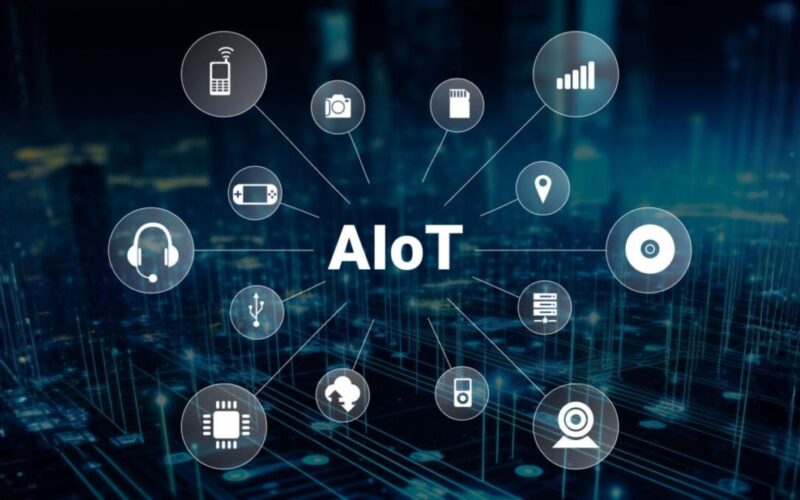Your business produces data with every click, transaction, and sensor reading, but having data isn’t the same as using it.
In India, the data analytics market reached US $3,551.8 million in 2024and is projected to grow to US $21,286.4 million by 2030, at a compound annual growth rate of 35.8 %.
As businesses face mounting pressure to stay competitive, the future will demand advanced analytics, AI-powered insights, and real-time data processing to remain relevant. Those who fail to keep up can struggle to get the full value of their data.
This blog outlines what big data solutions actually mean, why they matter for your organisation, how to implement them step-by-step, and how to measure whether they’re delivering the value you expect.
Key Takeaways
- Real-time analytics and edge computing are key trends businesses must adopt by 2025 for faster, more responsive decision-making.
- Predictive maintenance, churn prediction, and supply chain optimisation are high-value use cases that drive measurable business impact.
- Emerging trends like decentralised data governance (data mesh) and agentic AI are changing how organisations manage and automate their data.
- Privacy regulations (GDPR, CCPA) and ethical data use will continue to play a crucial role in shaping data strategy moving forward.
- To succeed, businesses must measure ROI, time-to-insight, and operational efficiency, while avoiding common pitfalls in data measurement.
What Do We Mean by “Big Data Solutions” and Analytics?
Big data solutions are designed to help businesses handle, process, and derive insights from large and complex datasets that traditional data systems cannot manage. These solutions are essential for turning raw data into valuable information by using advanced technologies and analytics techniques.
By integrating data from various sources and analysing it in real time, big data solutions enable businesses to make informed, data-driven decisions that can optimise operations, improve customer experiences, and drive growth.
Key Components of Big Data Solutions
Big data solutions consist of several critical components that work together to capture, process, analyse, and store data.
1. Data Ingestion & Storage
Data is collected from diverse sources like customer transactions, social media, and sensors. It’s then stored in scalable cloud platformsor data lakes, which can handle vast amounts of structured and unstructured data.
These storage solutions enable businesses to store data in its raw form and process it later.
2. Data Processing
After data is ingested, it must be processed to ensure it’s clean, structured, and ready for analysis. Tools like Apache Spark and Hadoop are used for large-scale processing, ensuring data is accurate and usable for business insights.
3. Data Analytics
Data analytics helps businesses transform raw data into actionable insights. Depending on the business needs, different analytics techniques are used: from understanding past performance to predicting future outcomes and recommending actions for optimisation.
4. Data Visualisation
Visualising complex data is key to making it accessible for decision-makers. Dashboards and data visualisation tools like Tableau and Power BI present insights in easy-to-understand formats, enabling quicker decision-making based on the data.
5. Data Governance
Ensuring that data is accurate, secure, and compliant with regulations is essential. Data governance defines how data is handled, accessed, and protected, ensuring businesses maintain high standards of data integrity.
Levels of Big Data Analytics
Big data analytics is typically categorised into four levels, each serving a different purpose and providing increasing value.
These levels of analytics build on each other, from simple data reporting to advanced decision-making.
| Level | Description | Example |
| Descriptive Analytics | Summarises past data to understand what has happened. It focuses on historical performance and key metrics. | Monthly sales reports or website traffic summaries. |
| Diagnostic Analytics | Identifies the reasons behind past events or trends. It answers “why” something happened, helping businesses understand causes. | Investigating why a product’s sales dropped in a particular quarter (e.g., customer behaviour or external factors). |
| Predictive Analytics | Uses historical data to forecast future outcomes. Predictive models assess patterns to estimate what might happen. | Predicting customer churn or forecasting demand for specific products in the next quarter. |
| Prescriptive Analytics | Recommends actions to optimise business outcomes based on predictive insights. It suggests the best course of action to take in given situations. | Recommending changes to inventory levels based on predicted demand to maximise revenue. |
Also Read: Analytics as a Service: Essential Steps for Implementation
The Role of Real-Time Analytics in Big Data Solutions
Real-time analytics is becoming a crucial component of big data solutions, especially for businesses that rely on timely data to make quick, informed decisions.
Unlike traditional batch processing, which operates on scheduled intervals, real-time analytics processes and analyses data as it is generated, providing instant insights.
The benefits of real-time analytics include:
- Faster Decision-Making: Real-time analytics enables businesses to make decisions based on the most current data, reducing delays and improving responsiveness.
- Industry-Specific Advantages:
- E-commerce: Retailers can dynamically adjust prices based on real-time demand fluctuations, improving competitiveness and customer satisfaction.
- Finance: Financial institutions can monitor transactions in real time, detecting and preventing fraud as it happens.
- Healthcare: Healthcare providers can access real-time patient data, allowing them to make immediate treatment decisions.
- Adaptability in a Rapidly Changing Market: With the rise of IoT devices, mobile apps, and connected systems, real-time analytics is essential for businesses that need to stay agile and responsive to evolving customer needs and market conditions.
Is your data creating confusion instead of clarity? At Codewave, we transform your data into a powerful strategic asset withour Data Strategy and AI solutions, enabling faster, more informed decision-making.
Get a consultation today and see how we can turn your data into actionable insights that drive growth and innovation.
Also Read: Emerging IoT Trends and Technologies to Watch in 2025
Where Are the Biggest Opportunities in Big Data Solutions Today?
As the global demand for big data solutions skyrockets, businesses must seize the opportunities while avoiding common pitfalls. The big data market is expected to grow at a 13.3% CAGR from 2024 to 2029, adding approximately USD 193.2 billion in value.
Key Growth Drivers
Several key factors are driving the rapid adoption of big data solutions, enabling businesses to optimise operations and gain deeper insights.
- Cloud Adoption: Shift to cloud‑native storage and processing lowers barriers to entry and simplifies scaling of big‑data platforms
- Real‑Time & Streaming Analytics: Businesses increasingly demand insights as events occur rather than waiting for batch reports.
- IoT and Sensor Data Streams: The proliferation of connected devices generates large volumes of diverse data, fueling demand for platforms capable of handling the “three V’s”. Industries such as manufacturing and logistics rely on IoT data streams to improve predictive maintenance and streamline supply chain management.
Pitfalls to Watch Out For in Big Data Solutions
While the growth potential is undeniable, businesses must be mindful of several challenges when implementing big data solutions. The following are common pitfalls that need to be addressed:
- Data Silos: When departments hold isolated datasets, they block enterprise‑wide insight and increase costs and inefficiency.
- Poor Data Quality & Veracity: Inaccurate, inconsistent or incomplete data undermines analytics accuracy and business trust in the output.
- Lack of Governance & Skills: Especially for SMEs, lack of data‑science skills and weak governance frameworks impede adoption.
Opportunity: SMEs vs Enterprises
The big data market offers different opportunities depending on a business’s size. While enterprises can capitalise on large-scale systems, SMEs are often more agile and can use big data for targeted improvements. Here’s a breakdown of the opportunity for each:
- Enterprises tend to have large‑scale legacy systems, budgets for big‑data infrastructure, and can process multiple data streams across operations. Their opportunity lies in modernising ingestion, reducing latency, and embedding predictive insight into operations.
- SMEs often face constraints in budget, resources, and technical skills. Yet the growth rate for Indian SMEs in big‑data services is estimated at 12.78% by 2030.By selecting specific use cases (e.g., customer behaviour, digital marketing analytics), SMEs can derive disproportionate value relative to the cost.
- The difference in scale means SMEs may initially focus on narrower use cases with clear ROI rather than full enterprise‑grade ecosystems.
Use‑Case Snapshots Across Industries
- FinTech / Banking: A banking institution uses streaming transactional data plus fraud‑detection models to flag suspicious behaviour in real time, preventing losses and improving compliance.
- HealthTech: A healthcare provider ingests patient device data and outcomes data to apply predictive analytics, which forecasts patient deterioration risk and triggers timely intervention.
- EdTech: An online learning platform collects student‑engagement and performance data, applies diagnostic and predictive analytics to personalise learning paths and reduce drop‑outs.
Wondering how AI can transform your business? At Codewave, we offer Artificial Intelligence and Machine Learning Consulting Services that use cloud-native infrastructure, advanced machine learning frameworks, and real-time data processing to drive innovation.
Get in touch today to see how we can help you build AI solutions that scale with your business.
To truly capitalise on big data’s potential, focusing on the right use cases is critical. Here are some high-impact examples where data analytics delivers substantial business value.
High-Impact Analytics Use Cases That Deliver Business Value
To drive meaningful business outcomes from your data, focusing on high-value use cases is essential. Here’s a breakdown of analytics applications that can deliver significant impact across various industries:
1. Predictive Maintenance in Manufacturing
Organisations using predictive maintenance via big‑data analytics cut unplanned downtime and operational costs significantly. For example, manufacturers that apply AI and IoT‑driven maintenance have achieved five‑times ROI and reduced machine failures by up to 50%.
2. Customer Churn Prediction in FinTech/Insurance
In sectors where retention is critical, applying data models to identify likely defectors allows targeted interventions. Such models translate into higher lifetime customer value and lower acquisition cost.
3. Real‑Time Supply Chain Optimisation in Logistics/Transport
By analysing live data from fleets, inventory and route systems, logistics firms can reduce delays and optimise routing dynamically. These firms report faster delivery cycles and fewer disruptions due to data‑driven decisions.
4. Personalised Learning in EdTech via Analytics
Education platforms using student‑engagement and performance data to tailor learning paths have seen higher completion rates and improved outcomes. Analytics allow educators to intervene early based on predicted drop‑out risk or slow progress.
As businesses prepare for the next wave of data innovation, understanding emerging trends is key. Let’s dive into the trends shaping the future of data and analytics.
Emerging Trends You Need to Prepare For in 2025 and Beyond
The next wave of data transformation is already underway, and businesses need to stay ahead of emerging trends to maintain a competitive edge. By 2025, the demand for real-time insights, decentralised data management, and advanced AI systems has changed how companies approach data analytics.
Below are the key trends you must prepare for now to ensure your business is equipped to use data’s full potential.
1. Real‑Time and Streaming Analytics
Businesses are increasingly processing data as it arrives, enabling faster decisions.Nearly 65 % of organisations in one survey say they have adopted or are investigating AI for analytics.
What this means for you:
- Build systems that support streaming ingestion and immediate reporting
- Set up alerts and dashboards tied to live metrics
- Ensure your architecture supports low‑latency processing
2. Edge Computing + Big Data for Latency‑Sensitive Use Cases
Edge computing is growing, with the market projected to reach around USD 424 billion by 2030, growing at a CAGR of approximately 13 %.
What this means for you:
- Deploy analytics closer to data sources (e.g., IoT devices, sensors)
- Reduce latency and bandwidth costs by limiting data movement to central cloud
- Prioritise edge aggregation and preprocessing for time‑critical operations
3. Data Mesh and Decentralised Governance Models
Data mesh treats data as a product, assigning ownership to domain teams rather than a central hub.
What this means for you:
- Assign domain‑specific teams to own and maintain their data pipelines and quality
- Implement unified standards while enabling decentralised execution
- Improve the scalability of your data architecture by reducing bottlenecks
4. Agentic AI and Automated Data Operations
Agentic AI involves interconnected, autonomous agents that execute predictive and prescriptive tasks rather than just reporting.
What this means for you:
- Combine machine learning with decision automation to reduce manual intervention
- Design workflows where AI triggers actions (e.g., inventory replenishment, fraud alerts)
- Monitor model outcomes and continuously refine the agentic systems
5. Privacy, Regulation, and Ethical Data Use
Regulatory frameworks like GDPR and CCPA continue to evolve, and organisations must ensure data compliance, transparency, and ethical use.
What this means for you:
- Embed privacy and ethics into your data strategy from day one
- Use metadata and automated lineage tracking to ensure accountability
- Build trust with customers by ensuring their data is used responsibly.
Why Partner with Codewave
If your business runs on data yet doesn’t consistently get clear insights, Codewave can change that. We help you shape a data and AI strategy that turns information into measurable value—for example, improving accessibility by 60%, processing speed by 3×, and reducing operational cost by 25%.
- End‑to‑end data strategy: From audit to implementation, we assess your current data setup, create a tailored plan, and build the analytics/AI stack that supports continuous insight delivery.
- Output‑focused solution: Whether it’s predictive modelling, chatbots, or GenAI content solutions, our services go beyond concept to deliver actual business outcomes.
- Proven track record: With over 400 projects completed across 15+ industries—startups, SME’s, enterprises, and governments—our approach yields results in contexts ranging from education and FinTech to manufacturing and logistics.
- Design‑thinking led: We combine human‑centred design with technical execution, ensuring users adopt the tools and insights you build—meaning better decision‑making, not just dashboards.
Ready to turn your data into a strategic advantage? Check out our portfolio to see how we’ve helped businesses like yours innovate, optimize, and thrive.
Conclusion
The future of big data solutions is defined by speed, adaptability, and real-time decision-making. These trends are pushing companies to reimagine how data flows through their systems, how it’s processed, and how quickly it turns into action.
To stay competitive, organisations need to integrate real-time data capabilities, invest in scalable AI infrastructure, and align their data strategies with the demands of modern business.
At Codewave, we help businesses bridge the gap between data and action. With a focus on custom AI and data strategies, we enable companies to harness the power of their data today while preparing for the future.
Let’s start building your future. Reach out to us and explore how Codewave can design and implement a data strategy that positions your business for success in 2025 and beyond.
FAQs
Q: How can predictive maintenance impact manufacturing operations?
A: Predictive maintenance uses IoT data to predict equipment failures before they happen, reducing costly downtime and maintenance expenses. It allows manufacturers to move from reactive to proactive maintenance strategies, ensuring smoother operations and reducing production interruptions.
Q: What makes real-time analytics essential for modern businesses?
A: Real-time analytics enables businesses to act on data as it arrives, making faster decisions in high-stakes situations. In industries like finance or retail, this can mean detecting fraud in seconds, adjusting pricing dynamically, or managing inventory in real time, ensuring operational efficiency and competitiveness.
Q: How does decentralised data governance (data mesh) improve scalability?
A: Data mesh decentralises data management by allowing individual teams to own their data products, improving scalability and flexibility. This model reduces bottlenecks typically caused by centralised data governance, enabling quicker insights and better alignment between data sources and business goals.
Q: How do data privacy regulations affect big data strategies?
A: Regulations like GDPR and CCPA require businesses to maintain stringent data security and privacy standards. This impacts how companies collect, process, and store personal data, forcing them to adopt transparent practices and integrate data protection directly into their business and data strategies.
Q: What role does agentic AI play in automating business processes?
A: Agentic AI combines machine learning with autonomous decision-making to automate complex tasks. It enables systems to not just analyse data, but act on it in real time, reducing manual intervention and speeding up decision cycles across areas like customer service, inventory management, and financial forecasting.
Codewave is a UX first design thinking & digital transformation services company, designing & engineering innovative mobile apps, cloud, & edge solutions.







